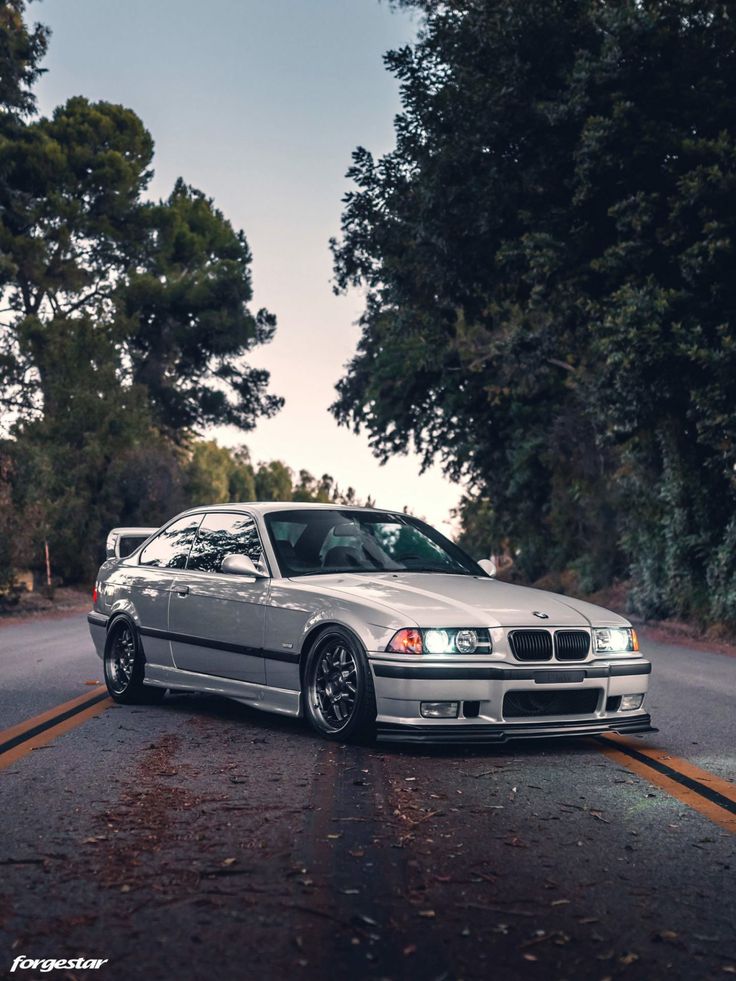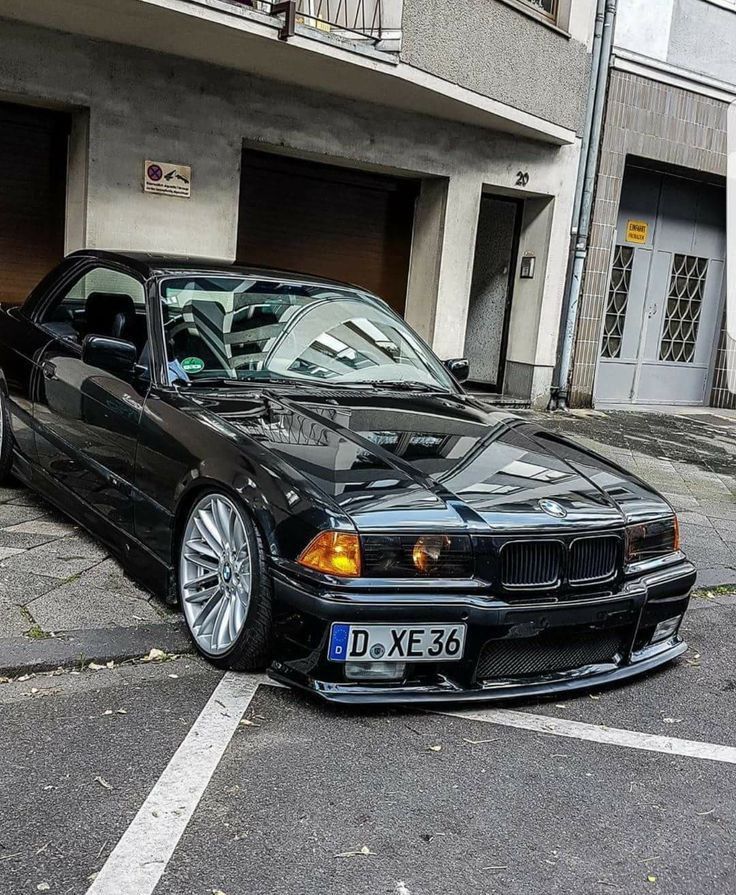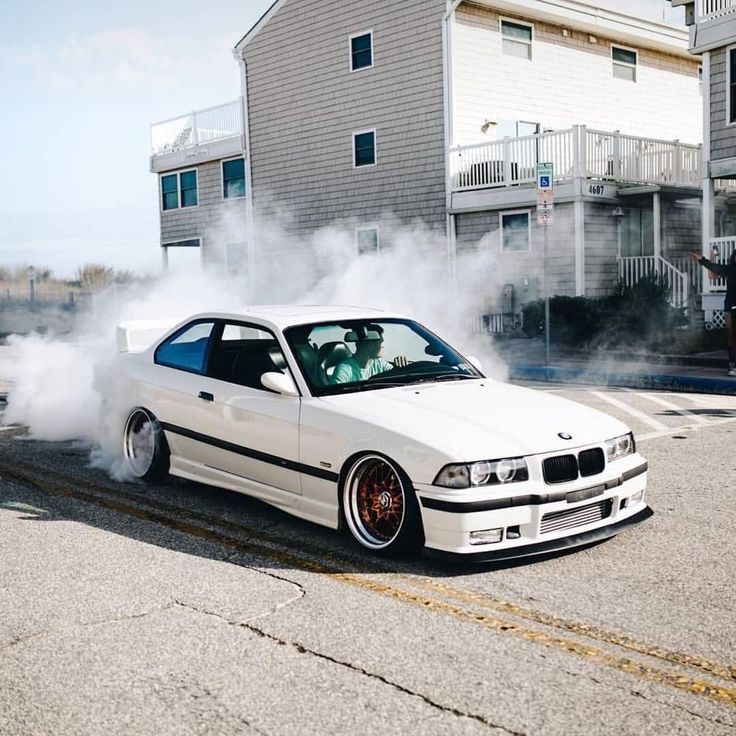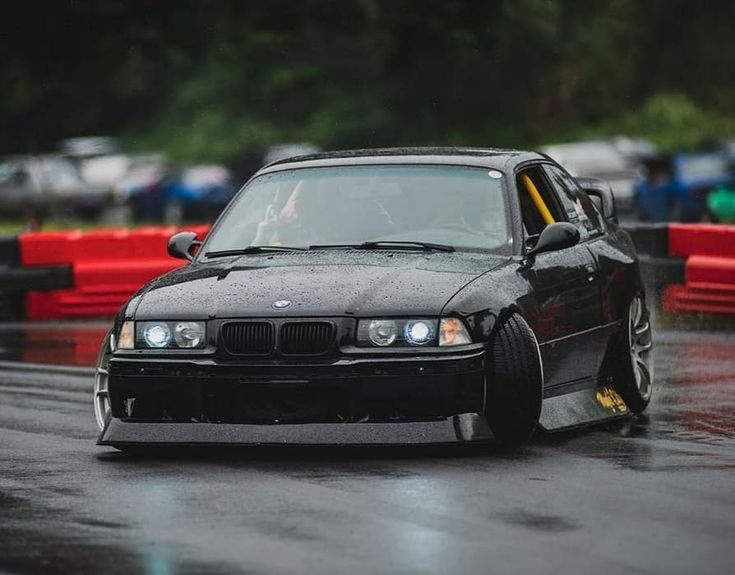The BMW E36 is the third generation of the BMW 3 Series, produced from 1990 to 2000. This model represents a significant leap forward for BMW, with major improvements in technology, design, and performance over its predecessor, the E30. The E36 is often regarded as one of the most well-rounded and iconic 3 Series cars, offering a perfect balance between everyday usability and sporting performance. Here’s everything you need to know about the BMW E36:
1. Overview of the BMW E36
The E36 was introduced in 1990 as the successor to the E30. The model lineup included several body styles:
- 2-door coupe
- 4-door sedan
- 5-door wagon (Touring)
- 2-door convertible
- M3 variant (performance-focused)
The E36 had a more rounded, aerodynamic design compared to the boxier E30. It was known for its improved ride comfort and refined driving experience, making it a great all-around vehicle.

2. Engine Options
The E36 offered a wide variety of engines, from smaller, more economical options to high-performance variants. Here’s a breakdown of the engine choices:
Inline-4 Engines:
- BMW 316i: 1.6L, 102 hp
- BMW 318i: 1.8L, 113 hp
- BMW 318is: 1.8L, 140 hp (Sportier model)
- BMW 320i: 2.0L, 150 hp (Available in various markets)
- BMW 323i: 2.5L, 170 hp (Available in select markets)
Inline-6 Engines:
- BMW 325i: 2.5L, 189 hp
- BMW 328i: 2.8L, 193 hp (More powerful, with increased torque and performance)
Performance Engines (M Models):
- BMW M3 (E36): 3.0L inline-6, producing 240 hp (from 1992-1995) or 321 hp (from 1996-1999 with the M3 Evolution). The M3 was the flagship performance model, with a more aggressive engine and chassis.
The E36 was available with both manual and automatic transmission options, with the 5-speed manual being the most popular choice among enthusiasts.
3. M3 (E36) – The Performance Icon
The BMW M3 E36 became one of the most famous high-performance sports sedans of the 1990s. It was designed to offer both everyday usability and exceptional driving performance.
- Engine: The E36 M3 initially used a 3.0L inline-6 engine (S50), producing 240 hp, and later a 3.2L engine (S52) with 321 hp for the M3 Evolution models.
- Suspension & Handling: The M3 had sport-tuned suspension, larger brakes, a limited-slip differential, and wider tires, which improved its cornering abilities and overall driving dynamics.
- Aerodynamic Design: The M3 had distinct styling changes, including wider fenders, an aggressive front bumper, quad exhausts, and sportier side skirts.
- Performance: The M3 E36 could accelerate from 0-60 mph in around 5.5 seconds, making it one of the fastest cars of its time in this segment. The M3 was also widely used in motorsports, especially in touring car racing, where it achieved considerable success.
4. Technology & Features

The E36 was an advancement in terms of technology compared to the E30, offering several features that were considered cutting-edge at the time:
- ABS (Anti-lock Braking System) and ASC (Automatic Stability Control) were standard in most E36 models.
- Airbags were included in the E36, adding an additional layer of safety.
- Electronic Climate Control was available for the first time in the 3 Series lineup.
- On-board computer to provide vehicle information, fuel consumption, and range.
- Cruise control and power windows became more standard across the range.
- The BMW E36 Convertible and Coupe featured improved comfort, offering options such as leather upholstery, premium audio systems, and a more refined interior.
5. Handling & Performance
BMW’s reputation for building excellent handling cars was reinforced with the E36, which offered:
- Rear-wheel drive (RWD) for that signature BMW driving feel, with precise steering and a balanced weight distribution.
- The E36 featured a double wishbone front suspension and a multi-link rear suspension, which improved handling and comfort.
- The M3 models took this a step further with sportier suspension settings and upgraded components to handle high-performance demands.
- Improved ride quality: While the E36 was still a sporty car, it was far more refined and comfortable than the earlier E30, making it a great choice for both daily driving and spirited driving.
6. Interior & Comfort
The interior of the E36 was designed with a focus on quality and functionality:
- The seats were designed to offer great comfort and support, especially for long trips or sporty driving.
- The dashboard was modern, with clear gauges and an intuitive layout, making it easy to operate all the features.
- The materials used inside the cabin were of higher quality compared to previous models, with soft-touch plastics and more refined finishes.
- The sound insulation was improved over the E30, offering a quieter cabin, even at higher speeds.
- The E36 also had more cargo space, especially in the sedan and touring variants, making it practical for everyday use.
7. Reliability & Maintenance
The BMW E36 is known for being generally reliable, but like any older car, it requires proper care and attention:
- Cooling system issues: As with many older BMWs, the E36 is known for potential issues with the cooling system, including water pumps, radiators, and hoses. Regular maintenance in this area is essential.
- Rear subframe issues: Some E36 models (particularly higher-performance variants) have been known to suffer from rear subframe cracks due to high loads. It’s important to inspect the rear subframe, especially on the M3 models.
- Suspension wear: Suspension components, like bushings and control arms, can wear out over time, particularly on cars that have been driven aggressively.
- Electrical issues: As these cars age, you might encounter electrical issues, including problems with the window regulators, door locks, or heating controls.
8. Collectability & Pricing
The E36 has been increasing in value over the years, especially for well-maintained models and the M3 variant:
- BMW M3 E36: Prices for an E36 M3 in good condition can range anywhere from $10,000 to $30,000, depending on the model year, mileage, and condition. The later Evo models (produced after 1996) tend to fetch higher prices.
- Non-M3 E36: For a 325i or 328i, prices can range from $3,000 to $8,000 for well-maintained examples, though you may find cheaper ones for cars with higher mileage or in need of restoration.
- E36 Touring: The wagon variant is becoming more desirable, and prices have risen for clean, low-mileage examples.
9. Legacy & Impact

The BMW E36 is widely regarded as one of the most well-balanced and fun-to-drive cars of its era. It helped BMW solidify its reputation for building sporty, luxury vehicles that were also practical. The E36 set the foundation for future models, including the E46 (the next-generation 3 Series), and was a key part of BMW’s success in the 1990s.
The E36 is still highly regarded by car enthusiasts, particularly those who appreciate its classic BMW driving dynamics, and it remains a popular platform for modification and restoration projects.
Key Specs for the BMW E36 (1990-2000):
| Model | Engine Type | Power (hp) | 0-60 mph (sec) | Top Speed (mph) |
|---|---|---|---|---|
| BMW 316i | 1.6L Inline-4 | 102 hp | 10.0 | 118 |
| BMW 318i | 1.8L Inline-4 | 113 hp | 9.5 | 120 |
| BMW 325i | 2.5L Inline-6 | 189 hp | 7.0 | 140 |
| BMW 328i | 2.8L Inline-6 | 193 hp | 6.5 | 150 |
| BMW M3 (E36) | 3.0L Inline-6 | 240 hp | 6.1 | 155 |
The BMW E36 is an exciting blend of performance, luxury, and practicality. Whether you’re a fan of the sporty M3 or enjoy the balance of the 325i, this car remains a beloved icon in BMW’s history.

